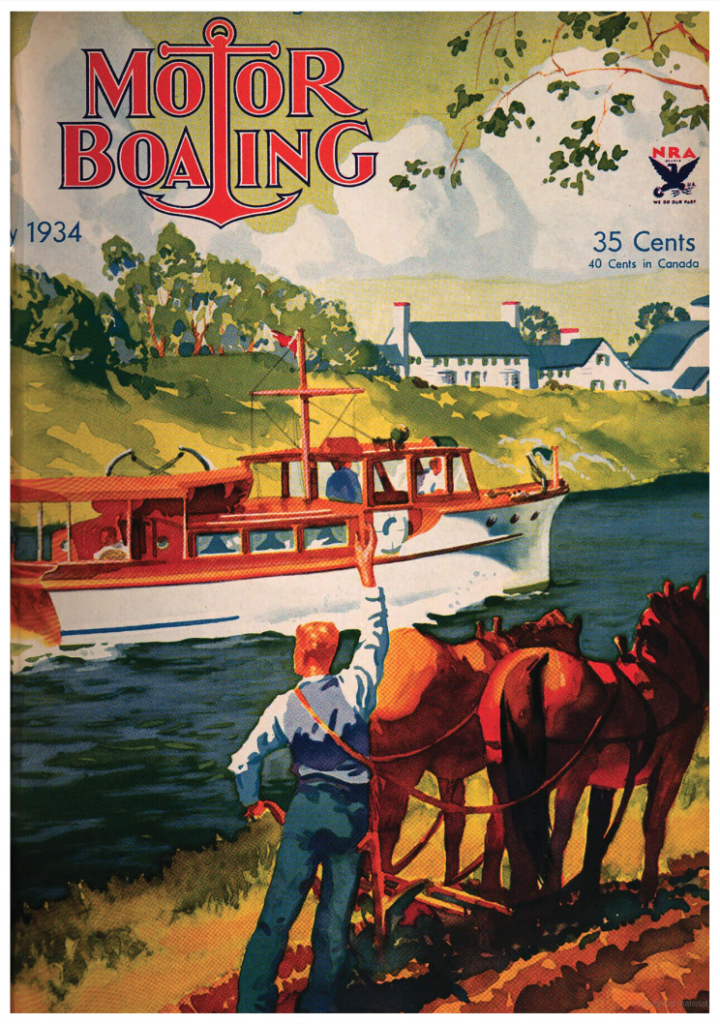
Cover image of the May 1934 Motor Boat Magazine. Used with permission.
by H.H. Meyer – Reprinted with permission of Bonnier LLC.
Introduction by Michael Gillespie
The following article, “Missouri’s Lake of the Ozarks,” appeared in the May, 1934, issue of the long-gone Motor Boating magazine. The author was H.H. Meyer, a writer and boating enthusiast from New England. At the time of Meyer’s visit—in October, 1933—the Lake was not yet three years old but had gained fame as the largest manmade reservoir in the nation. The Great Depression put a damper on much of the expected growth at the Lake—nevertheless, here and there, one could find a real estate development or a fishermen’s camp, and even a boat yard or two. But for the most part, Lake of the Ozarks was empty, with miles and miles of unblemished shoreline. And a boat ride on that vast Lake was an adventure that an Eastern writer could not resist….
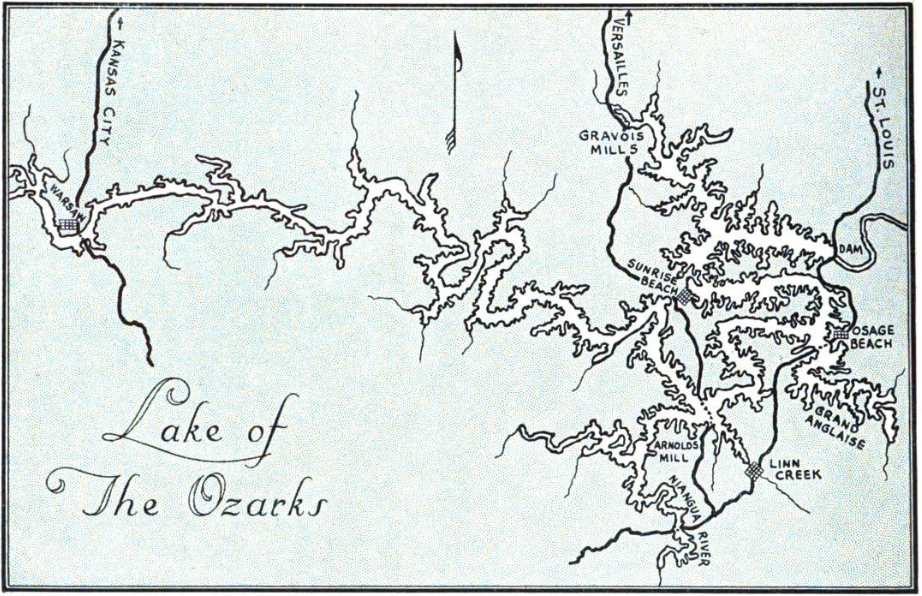
Vintage image from the article “Missouri’s Lake of the Ozarks” published in the May 1934 Motor Boat Magazine.
While in Kansas City on business several years ago I saw a colored movie describing the Lake of the Ozarks. According to the producer not one superlative was absent. I was reminded of the gentleman from a western city who admitted to an eastern friend that his home town needed only the proximity of the Atlantic Ocean to be the world’s biggest and best. The eastern friend assured the booster that the trouble could be remedied in no time at all if the folks at home would learn to suck as hard as they blew.
I forgot all about the Lake until last month when a friend of mine returned from a trip down East. In the course of his travels he had visited the Wyman Dam and asserted that the Lake created thereby was the largest artificial lake in the United States. I remembered the movie, and that started an argument. My friend had never heard of the Lake of the Ozarks but asked politely — “Have you seen it?” I admitted that I had not. HIs reply, “Well, I have seen my lake” closed the argument for the time being, but I made up my mind to see for myself, and so I have. The western booster certainly took the advice of his eastern friend to heart.
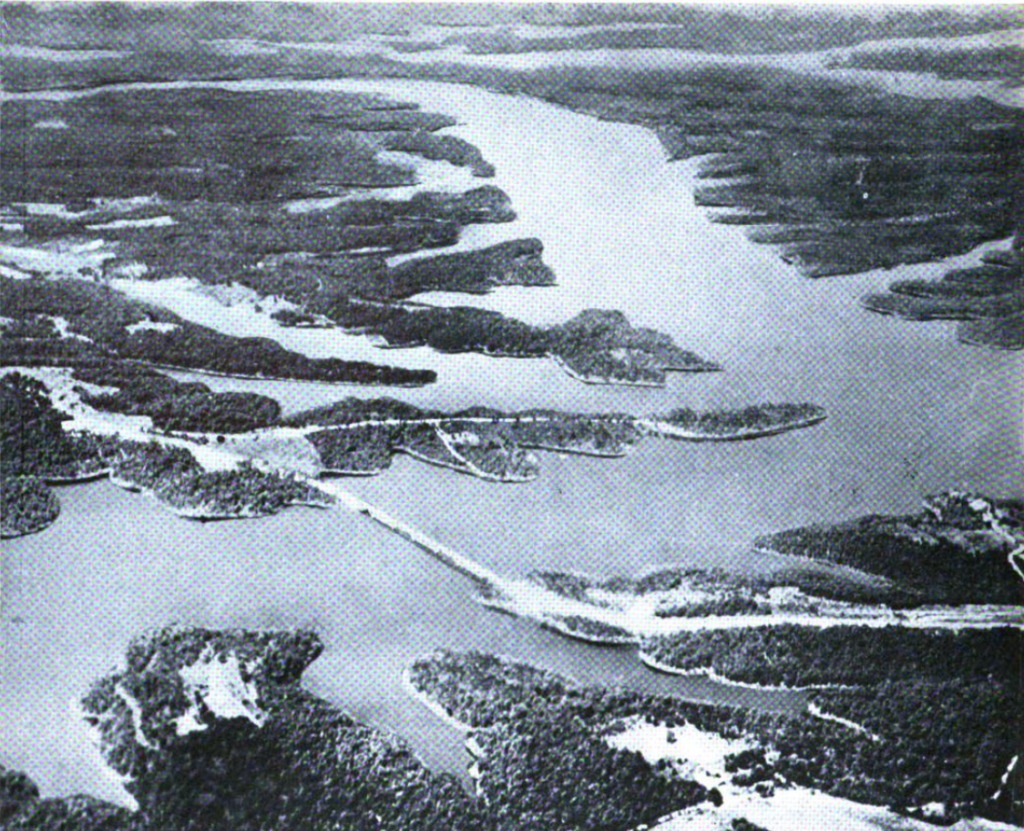
Vintage image from the article “Missouri’s Lake of the Ozarks” published in the May 1934 Motor Boat Magazine.
Before starting west, in October, I searched for a map of the Lake, without results. I even wrote to Washington. In Kansas City, however, I found an excellent one, prepared by Tuttle-Ayres-Woodward Co., of 417 East 13th Street. The Lake was formed in 1931 by a dam erected across the Osage River at Bagnell, Missouri, by the Union Electric Light & Power Company. It is said to be the world’s largest artificial body of water; covers approximately 95 square miles and extends east and west across central Missouri for one hundred and twenty-six miles from the Dam to Warsaw. In addition it has three large branches—the Gravois, the Grand Glaize, and the Niangua—and literally hundreds of lesser inlets. The shore line measures about thirteen hundred miles.
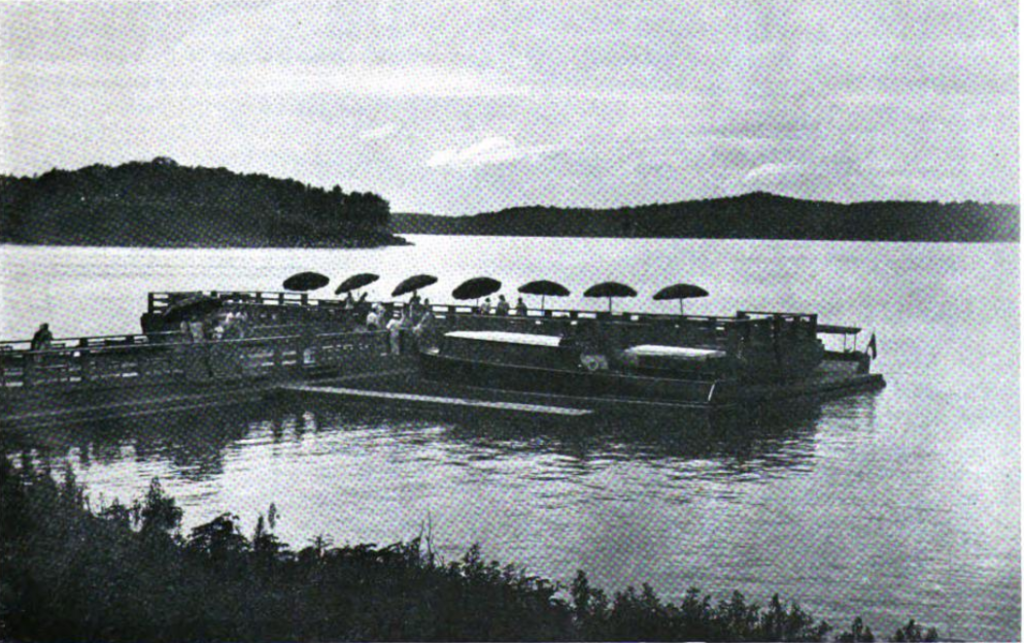
Vintage image from the article “Missouri’s Lake of the Ozarks” published in the May 1934 Motor Boat Magazine.
At high water the surface of the Lake is 660 feet above mean Gulf level, and in order that it might be safe for boating the Power Company cleared the Lake bed of all obstructions above the 628 foot level. When I visited the Lake the water level stood at 654.5 feet. During a long day spent on the water I didn’t see a single log or even a stick floating on the surface.
We motored from Kansas City to Sunrise Beach, situated on the west side of the Lake, about ten miles above the Dam. On the way we followed Route 50 through Warrensburg to Sedalia; Routes 65 and 52 through Cole Camp to Versailles; and Route 5 through Gravois Mills to our destination. The Bothwell House at Sedalia provided a splendid lunch, served quickly, in pleasant surroundings. We first saw the Lake at Gravois Mills and were not impressed; but from that point on the road climbed steadily through hills covered with oak. Suddenly, just beyond the Morgan-Camden County line, the Lake lay unfolded far below us, stretching away for miles, with many wooded pools and inlets. The hills wore foliage of many hues and the sun, low in the west, sparkled brilliantly on the dark blue water of the Lake.
We spent the night at Sunrise Inn, on a sandstone bluff, high above the Lake. The beds were good, as likewise the hospitality, and I shall long remember the fresh butter, raised biscuits, and pumpkin pie. Sunday dawned clear and frosty, with old Sol glaring at us across the Lake. Early breakfasts are the rule at Sunrise Beach, and ours was no exception. At eight o’clock we were all at the landing in the cove back of the hotel. A few minutes later Captain Bob Curry cast off the lines and off we started in his twenty-five foot Dee Wite cruiser. One and all, you should know Captain Bob—the most engaging story-teller I ever met. He began cautiously, but by five o’clock that afternoon the sky was raining three pound fishes right in the middle of Kansas. We voted him a worthy pinch-hitter for Noah, or Jonah, or Captain John Smith.
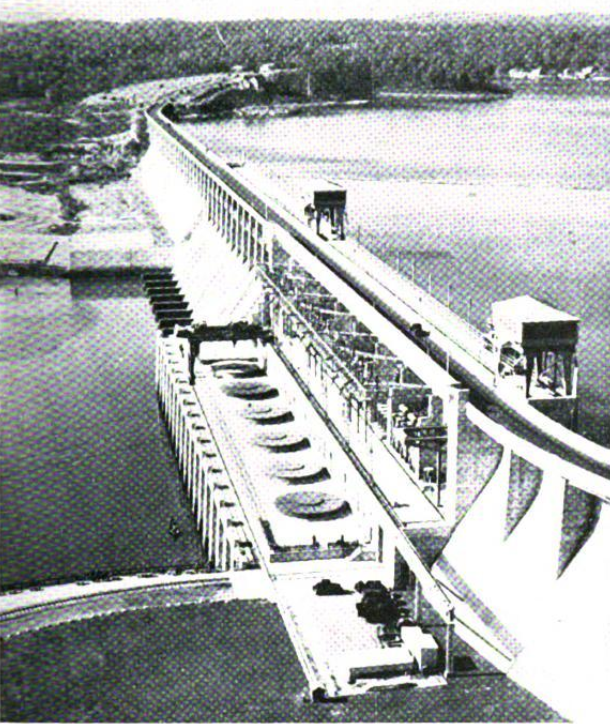
Vintage image from the article “Missouri’s Lake of the Ozarks” published in the May 1934 Motor Boat Magazine.
Captain Bob undertook to show us the utmost in the one day available. At first our course was almost due east for eight miles to the Arrowhead Beach Club. To port we passed sandstone cliffs, worn smooth by the Osage River in ages past, and crowned with a dense growth of oak; to starboard the shores sloped more gently to the water’s edge, inviting exploration. We counted ten inlets on that starboard shore; the map shows twelve. Six of them are over a mile long. Not one habitation was visible during the hour we spent on this run, but we saw literally thousands of mallards and wood-ducks resting on the lake. How I wished I owned a telephoto for my Leica. And we saw a great many fish. One big bass leaped clear of the water within a few yards of the boat. Captain Bob said the Lake was fished out. He couldn’t guarantee more than ten three-pounders a day.
Off the Arrowhead Beach Club the Lake turns due south for three miles, towards the little village of Zebra, screened by the oak forest. On the way to Zebra we ran up a tiny inlet on the port side, to Osage Beach, a favorite port for St. Louis folk. Gasoline was available at seventeen cents. About a mile beyond Osage Beach we passed the only lighthouse on the Lake—and a private one, at that—standing on Plaport Point at the east side of the entrance to the Grand Glaize. The Glaize looked entrancing, but Captain Bob only let us have a peek at it.
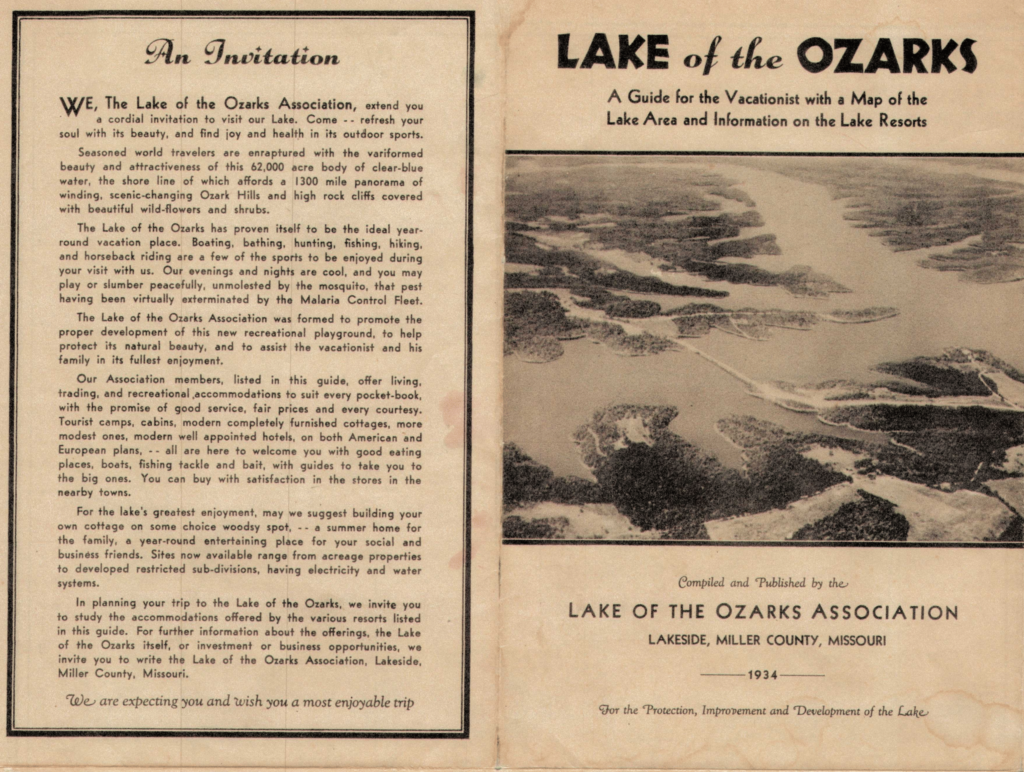
1934 Lake of the Ozarks Vacation Guide Cover
The Lake turns west at Plaport Point, and six miles further doubles back southeast for four miles to the Palisades. This four mile stretch was the best we saw, with high wooded hills and deep inlets on both sides, ending with the sheer limestone wall of the Palisades. Not content with its meanderings the Lake turns west again at the foot of the Palisades. Four miles beyond we came to the Four Corners formed by the Lake, Linn Creek and the Niangua.
At this point Captain Bob gave me the wheel, with instructions to “just keep her off the beach,” and when he started operations on his gasoline Kamp-Kook you can bet I followed his instructions to the letter. The Kamp-Kook turned out to be a flame-thrower in disguise, but Bob wouldn’t give up in spite of repeated assurances that we really didn’t want any coffee. However, he finally tamed the brute and two pots of coffee were disposed of.
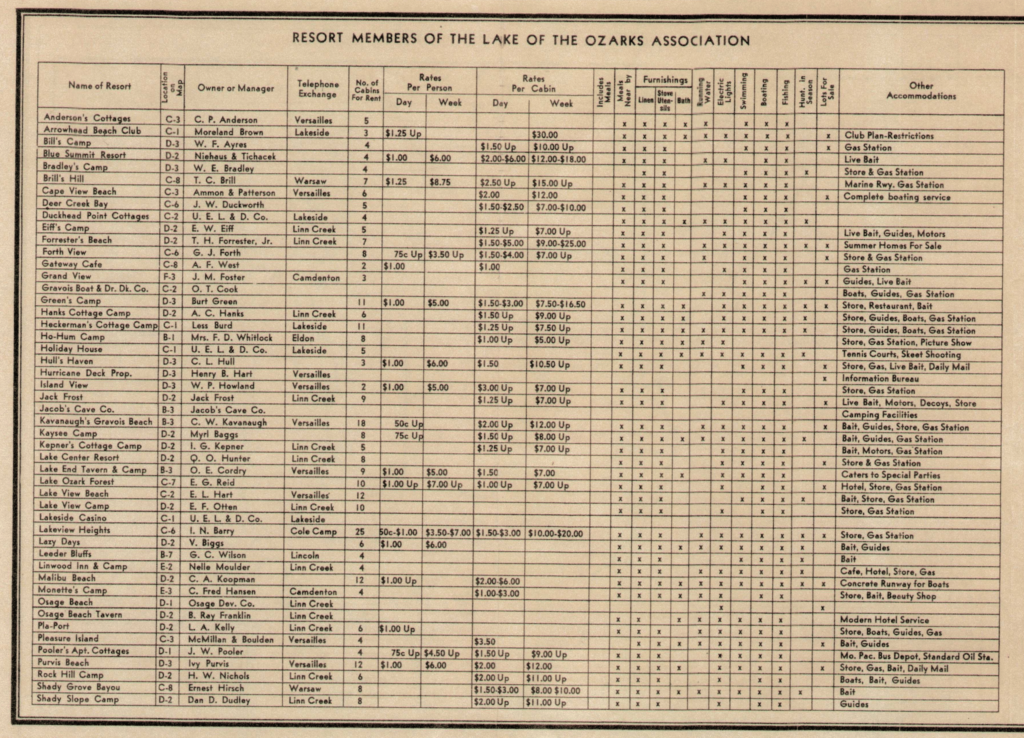
Resort members of the 1934 Lake of the Ozarks Association
We ran up the Niangua about five miles to Arnold’s Mill, where we reluctantly turned on our heels at one o’clock, for the run home. Including our side trips to Osage Beach and up the Glaize we had covered about thirty-six miles in five hours. Captain Bob gave her the gun on the way home, cutting our running time to four hours, so that we were able to carry on past Sunrise Beach towards the Dam. The inlets and coves are so numerous in that direction that we appeared to be navigating a wide lake dotted with islands, although there are said to be only six islands in the entire Lake. The sun set in all its glory, with Mister Moon looking on, as we turned towards home, and six o’clock found us back at Sunrise Beach, anxious to tackle whatever the cook had to offer.
I have cruised for nearly thirty years on salt water along the New England coast, with only one excursion on fresh water, to the Great Lakes. I have seen quite a bit of scenery here and there, and I know that what I saw Sunday, October 29, on the Lake of the Ozarks, will always rank near the top. Go see for yourself—Captain Bob is waiting at Sunrise Beach—but take a week instead of a day, and don’t forget your rod and gun.
